Questions and Answers from the Primo VE: Become an Expert Webinars
These are questions that were asked by attendees at the Primo VE: Become an Expert webinars, and answers from Ex Libris training staff.
Week 1: How Primo Works
January 11, 2024
1. How do you dedup results like that? We are seeing them as separate records in Primo.
ExL: We will cover deduplication and FRBR options in Week 7 of the series. Here is a link to the documentation on that functionality.
2. Is the expanded search pulling records from the CDI of the entire community? That is, from databases that your institution doesn't subscribe to?
ExL: Yes. The expanded search searches (almost) all the records in the CDI and returns results of resources to which you do not subscribe.
3. Our librarians are concerned about long list of links where e-items are available. We explained we need it for acquisitions work. Is there a way to dedup the collection links in Primo? We still need to show/track which collections we purchased but they don’t want all options to show for patrons.
ExL: The long list of resources can be confusing to patrons.
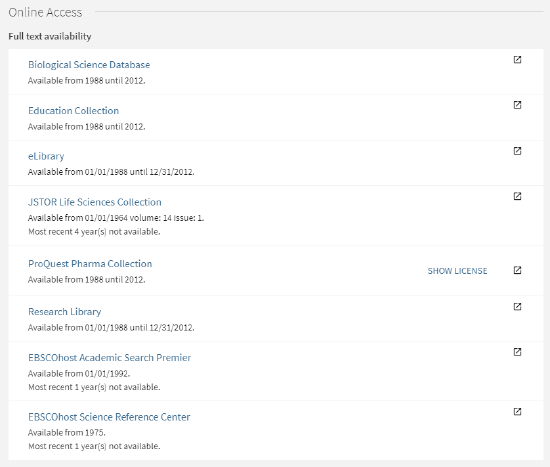
You can control which collections show in the Online Access section of the full record. Week 5 of the series will go over delivery configuration options.
4. How can you configure the order of the full text sources in Primo records?
ExL: Prioritizing providers and collections will also be covered in Week 5 of the series in the session focused on delivery.
5. Can you rename the facet labels to any word or is it a specific list to choose from?
ExL: You have full control over what your facet labels display. With great power comes great responsibility.
Week 2: Search Configuration
January 18, 2024
1. For a single institution, the deep search function is not applicable, right?
ExL: Deep search functionality enables cross-institution Primo VE searching for single/standalone institutions if they would like to allow their patrons to search another institution's catalog.
2. I was a little surprised to see the default fields Boosting for "addtitle", (i.e. title variant 246 etc) gets a negative boost 0.01. As I see the same in yours. We are curious if you might know the rationale of this default, i.e. maybe the initial testing shows CDI records have poor variant titles records and Ex Libris does not like to boost that?
ExL: I do not know the rationale for the out of the box settings. If you’re interested in finding out how other customers have customized these settings, check the Primo listserv.
3. Is boost factor 1.0 a real boost or as you mentioned it is multiply by 1.0 which means multiply by 1 - so no real boosting - is that correct?
ExL: That is correct; a boost factor of 1.0 would essentially mean no boost. To provide a boost, the Boost Factor setting must be greater than 1 (such as 1.5), and the maximum factor must not exceed 10.
4. How does the CDI profile differ from the Search Everything profile slot?
ExL: The CDI search profile slot brings back records from only the CDI. The Everything search profile slot includes the local catalog (what you see in Alma) and the CDI. That’s why it’s called a blended search
5. Does condition ordering matter (when defining search profiles)?
ExL: The conditions are a Boolean logic, so the conditions do need to be set up to bring back intended results. The selection of OR or AND and the order of the conditions can make a difference in your results.
6. Am I correctly understanding that you can't put a scope into a search slot, so you have to put a scope into a search profile and then you can put the search profile into a search slot, even if the scope and search profile are the same content?
ExL: Correct. There are times when a search scope, search profile, and search profile slot are the same content (Local content, CDI). The search scope is the foundation of the search because it defines what records should be included in the scope. Search profiles may have one or more search scopes, and then search profile slots are how a search profile shows in Discovery.
7. For the 'enable for basic search' (pre-filters), can you have some material types enabled only for basic while having all available for advanced?
ExL: The list of resource types is using the same tables for the basic and advanced search. The pre-filter brings the ability to offer some filter options to the basic search.
8. Do you just guess on what you make the boosting factor or is there a general practice/recommendations?
ExL: There is not an official recommendation from Ex Libris posted on the Customer Knowledge Center. To see what other customers are doing, I’d recommend searching the Primo listserv.
9. If you specify a year range (ending e.g., in 2024), then every year you'd have to remember to go back and update that boost if you wanted most recent 10 years? Is there a way to specify "most recent 10 years" where system will automatically apply years/dates?
ExL: With the current functionality, you would need to make that change every year. Consider adding this as a new idea on the Ex Libris Idea Exchange.
Week 3: Search Interfaces
January 25, 2024
1. Is there a way to have a Search Profile go to a unique URL? The way browse search is bsearch. When I select a search profile as a patron, the URL doesn't change. I want to link directly to Articles and More search. What is the URL I use to link to a Primo new search where the dropdown on the right has the "Articles and More" text with the down arrow (dropdown)?
ExL: This can be accomplished by adding additional parameters to the URL.
For example, if the base search URL is:
https://na07.primo.exlibrisgroup.com/discovery/search?vid=TRAINING_2_INST:TRAINING_2_INST
Adding &tab=CentralIndex to the end will direct users to a search with the 'Articles' search slot pre-selected, like so:
https://na07.primo.exlibrisgroup.com/discovery/search?vid=TRAINING_2_INST:TRAINING_2_INST&tab=CentralIndex
A specific search scope can also be defined in a URL, as described in the following note copied from our documentation:
If you want to display drop-down lists for the view's default tab and search scope in the search box initially, include the tab parameter as follows in Primo VE's URL:
http://<Primo_URL>/discovery/search?vid=<view_code>&tab=<default_tab_name>
If you want to display a drop-down list for a specific search scope initially, include the search_scope parameter as follows in Primo VE's URL:
http://<Primo_URL>/discovery/search?vid=<view_code>&tab=<search_profile_slot_code>&search_scope=<search_profile_code>
2. Can each institution in a consortium set the newspaper search differently?
ExL: Yes. When the configuration settings are at view level, as with enabling newspaper search, the configuration can be set up differently at the view (not even the institution) level. Other configurations like defining Featured Newspapers are done as part of Central Index configuration. These can be defined at the institution level, or if you are using distributed access for e-resources, separate Central Index configurations can be defined for different inventory management groups.
3. Is there a way to get to the Newspaper Search once it's turned on if you don't put it in the top nav? (or any other type of similar search).
ExL: When newspaper search is enabled in Primo VE, if you do not enable the link in the top navigation menu, it can still be accessed via:
-
The note at the bottom of the search results

-
In the Resource Type facet list
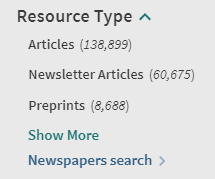
You can also copy and share the URL for the newspaper search even if it is not displaying in the top navigation menu.
4. Why is it that most databases in the CZ don't have a level URL (or have a marketing link instead of a link to the database)? Just curious as for many collections, this is something libraries would use.
ExL: Electronic collection bibliographic records and collection level URLs are maintained by the Community Zone content team (see here for more information). I would recommend reaching out to this team to request the addition of URLs for collections that do not have one.
5. According to the documentation and in our experience, Tags do not work right in a consortial network environment. Has this changed? Thanks!
ExL: No, that has not changed. When it does, the documentation will be updated.
6. Can you limit tags to specific user groups?
ExL: At present, all logged in users can create tags, regardless of user group. I would recommend adding this as a post on the Ex Libris Idea Exchange.
7. Can the topic overview include results from multiple reference collections? Is there a way to adjust what is included in the reference entry or to ensure the newer reference articles show up?
ExL: Reference entries for topic overviews are maintained as part of the CDI. I would recommend opening a case to address questions regarding the content included in reference entries.
Week 4: Display Configuration
February 1, 2024
1. Does the listen feature work on phone interfaces?
ExL: It sure does (and I just pulled it up on my own phone to verify)!
2. Why does the cover photo of the book sometimes differ in Alma versus Primo? And how can I make sure that both match, even specifying exactly which one I want?
ExL: My understanding is that the Alma thumbnails pull from Google Books. Primo thumbnails can use Google as well, but also use Syndetics (preferred above Google). This is where you can sometimes end up with different thumbnails in Alma vs. Primo. The thumbnails are usually pulled based on the identifier (querying the respective service), so there isn't a direct way to specify the cover, but making sure you have accurate identifiers is a start. If you notice a book cover is incorrect, you can also reach out to the service to request correction.
3. Can you select which CDI document attributes you'd like to display? Or is it all or nothing?
ExL: The setting in the view configuration is all or nothing.

4. Does Location facet appear for all your libraries in your consortium? Or, does Location only appear when viewing a single institution?
ExL: This depends on your configurations. See the "Discovery Network Settings" section in the documentation.
5. If you hit Restore, does it just restore that last configured or ALL configurations?
ExL: The latter, it restores the entire table that's being configured.
6. Is News not an available filter for the filter bar? Or is it just lumped with Articles?
ExL: Many additional resource types are available to be enabled for the Resource Type Filter Bar, including Newspaper articles.
7. Are the BX articles coming from outside your CDI?
ExL: Yes, these articles are coming from across the world and are not specific to your CDI. They may direct patrons to articles for which you do not have access - but if you offer article services like RapidILL they could be offered that service.
8. I'm a new Alma/Primo library. Is the bX Article Recommender included with Primo VE or is that a separate cost?
ExL: This is an additional subscription service with a separate cost. I would recommend checking your existing contract to see whether bX has been included. If you are part of a consortium, you may also have access to bX through the consortium. For more information on registering for and configuring the bX recommender, please see this documentation.
9. Would it be possible to set up only one specific field that can be edited in the Library Card? For example, contact info but not valid date for the patrons.
ExL: It is not possible to set up only one specific field that can be edited. However, please note that only patron personal details can be edited. The "Valid From" in the personal details section refers to the contact information; this is separate from the account expiry date, which cannot be edited.
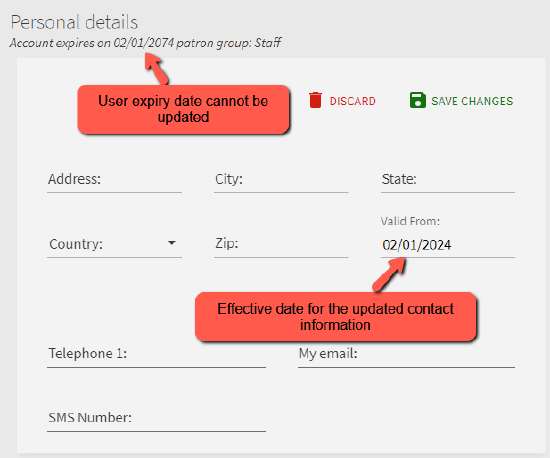
Week 5: Delivery Configuration
February 8, 2024
1. Can you hide Digitization for all?
ExL: Yes, if you do not offer digitization services, it is possible to configure Alma to not display that option at all.
2. When you say "is available" does that mean literally that all copies are available for an item (in other words, what happens if the library holds the item, but all items are checked out. Will a resource sharing request appear then?
ExL: If any one copy is on the shelf, then "is available" will be true. If all copies are checked out or otherwise not on the shelf, then "is available" will be false; in the case of our example, that would result in the Resource Sharing Request option appearing. The services that you offer to your patrons are up to you. Some libraries will offer ILL/Resource Sharing where other libraries will only offer an option to place a hold. The services that you offer should reflect your library’s policies.
3. For the services proposed in the Get it section, is it possible to propose your own forms (purchase request or interlibrary loan) or is it automatically the Primo form?
ExL: You could use General Electronic Services to provide links to your own forms if the existing forms do not suit your needs
4. Can we hide link of local portfolios if the Full-text service exists in an activated electronic collection?
ExL: This is not directly possible, but you could use other criteria to assist in hiding local portfolios depending on how they are defined in your environment. This may include specifying logic for particular local electronic collections or interfaces. It is also possible to de-prioritize local portfolios via the Online Services Order option to Display CZ collections first.
5. Does this [Display Logic] only apply at the article level, or at the journal level as well? The concern is if you hide one vendor based on another being present, but they have different coverage for the title.
ExL: Display Logic Rules are reviewed by the system when the searcher is looking at a full record view. This includes journals and could potentially result in a journal link with different coverage being hidden as you describe. The details and order of the rules in the table matter, so I would recommend testing your rules to ensure results are not hidden in undesired scenarios.
6. What is a CDI record?
ExL: CDI records are article-level records that originate in the Central Discovery Index.
7. How did you get to the Service Details menu?
ExL: Configuration > Fulfillment > Discovery Interface Display Logic > General Electronic Services, then edit the desired service.
8. If we enable direct linking and the first link (i.e. the direct link choice) is broken, a user could still see all available links to try by clicking on an article/book title in Primo to go to the full record. Is that correct?
ExL: Correct, the links to access the content will continue to appear in the full record view.
9. How do we get to the map to change holdings display to "true?"
ExL: Configuration > Fulfillment > General > Other Settings, then change the uresolver_enable_getit_holding_configuration parameter to true. A screenshot and instructions are also included in the presentation slides for the session.
10. Is Direct Linking compatible with the Quick Links functionality?
ExL: Yes. Both features can be enabled in Primo VE. The QuickLink URL may be different than the Direct Linking URL depending on the available services.
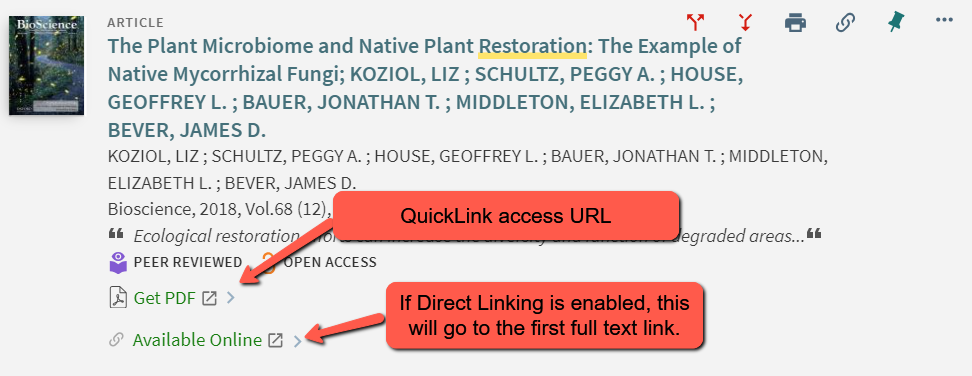
11. If information comes through an open URL request that are not visible on the resource sharing form, will it still be submitted to the system? For instance, if the Author initials field is not visible, will that information be submitted to the Alma Resource Sharing request?
ExL: Yes, even if the field is not visible in the form, if the metadata exists it will be submitted to the Alma Resource Sharing request.
Week 6: Local Data
February 15, 2024
1. When would you want to enable facet but not enable field for search?
ExL: It’s personal preference. The ability to enable or disable was added to the software; which choice you make depends on your patrons' needs.
2. When adding local field search indexes, do you have to have them in their own index, or can you add them to other, existing indexes. For instance, if you wanted the local_field 4 to also be searched when you do a "title" search, can you add it to the "title" search index?
ExL: I do not believe it is currently possible to modify the out of the box search indexes. I believe this post on the Idea Exchange is requesting this functionality. I would recommend supporting that post on the Idea Exchange and/or pursuing this as an enhancement via the NERS system.
3. What do you see as the most common local (or other?) fields that libraries add for display and search?
ExL: We don’t track that information. I recommend looking at some library catalogs to see if there are facets that you don’t see with default configurations. You might also consider asking this question on the Primo mailing list.
4. Cataloger here. If I just want to add a local field to make it searchable only in the Alma repository (but don't care to add display/search/facet in Primo) - is this basically the same process, but don't add specific rules for display/search/facet?
ExL: Local fields can be made searchable in the Alma repository separately, by enabling the field's search index at Configuration > Resources > Search Configuration > Search Indexes. Please see the Configuring Search documentation for more information.
5. Something I'm trying to do is combine some Local Subjects with the full Subjects index. This is for a DEI project where we are putting in more appropriate subject headings for Indigenous peoples. We'd like them combined for display AND search in Primo VE. But under Advanced search, you need to chose either local subject or subject. Can I add our local subjects to the existing subjects index for search?
ExL: This question is similar to #2 above. I do not believe it is currently possible to modify the out of the box search indexes. I believe this post on the Idea Exchange is requesting this functionality. I would recommend supporting that post on the Idea Exchange and/or pursuing this as an enhancement via the NERS system.
6. Can you explain anything about what this warning about the Normalization Rules Method means? "If a member institution of a consortium is using this method for a local field, the same local field should not be used by other member institutions unless they are using either the same normalization rules or the Bibliographic Fields mapping method." on this documentation page.
ExL: This message is relevant to customers who are in an Alma environment that includes a Network Zone to ensure consistent results when searching in a shared Network scope. Disregard the message if you only have an Institution Zone in your system.
7. Can you enable facets to be displayed for certain collections or locations?
ExL: The configurations being shown are made at the institution level and are enabled for search and display at the View level. It is possible to restrict in which search profile slots a facet appears.
8. If you make an error when editing drool, do you get an error message?
ExL: If you make a syntax error, an error will be given when trying to save the normalization rule.

This will not catch instances where the syntax is technically correct but the rule does not do what is desired; it's always recommended to test on records to ensure the rule is accomplishing the desired goal.
9. Can multiple MARC fields be in 1 local field?
ExL: Yes.
10. When you remove the "editor" from display, does it also remove it from the search? Or would clicking on that link in the record still create a search for the version with editor? I'm wondering if that could possibly create issues with searching across authorities, as you could have a john smith, editor, and john smith. Would it display both in the results, or just the latter in that case?
ExL: This is a complicated question, and it ultimately depends on the specific field/subfield being configured as well as what type of changes are being made. As part of normalization for display, the rule creates an internal $$Q value. This $$Q is then what's used when performing a search as part of hypertext link definitions.
The $$Q does not necessarily include all of the same subfields that are used for display; for example, the $$e editor in the 700 field is not included. Thus, in that example, removing $$e from the display has no bearing on the search performed from clicking that link. However, if you do remove a subfield from display that is used in the $$Q, the search would still include that subfield unless that portion of the normalization rule was also edited.
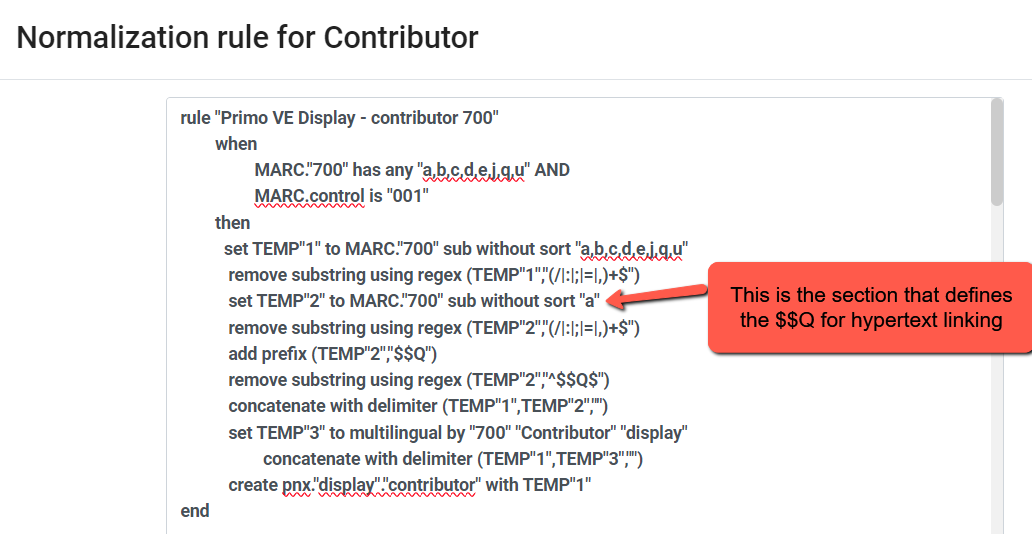
11. Does the Local Field Translate Table support wildcard matching?
ExL: This table does not currently support wildcards.
12. If you choose the "Enable field for search" option but don't add the local field as a search index, will the field be included in the keyword index?
ExL: From testing, yes, it looks like checking the "Enable field for search" option allows the field to be searched in the keyword index, even if it has not been added to the advanced search.
13. Followup on Q4. If you don't enable a local field for search and facet and don't add a norm rule for display, will the field be displayed in Primo?
ExL: There are two steps required for a field to be displayed in Primo. First is to define either a local field or a norm rule for display, and second is to add the local field to the record details section in the full record configuration for a view.
14. Is it possible to use local fields to select a different cover image than what may be provided from Syndetics and/or Google?
ExL: Not via Local Fields, but it is possible to Configure Thumbnail Templates for Primo VE.
15. If you create a local resource type with the same name as a system resource type, does it merge the 2 together, or would there be 2 entries with the same name showing up under resource types (1 based on the local version and 1 based on the system type).
ExL: If you try to save a local resource type with the same code (case sensitive) as a system resource type, you'll receive an error.
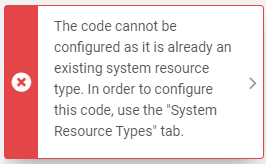
16. I'd still like to understand better what the implications are for local data if you are in a consortium / network zone. Does that message mean that local fields are best decided at the consortium level? Or what are the issues to avoid?
ExL: The biggest issue is to avoid using different normalization rule mapping in the same local field at different member institutions. If this does occur, patrons searching in a shared search scope may see incorrect results from a different institution's normalization rule field mapping. More information on defining local fields in a consortium can be found in our documentation here. I also recommend this short training video that explains more about the configurations and impacts in a consortium.
17. Can local resource types be assigned to records like ejournals in the IZ/NZ?
ExL: Yes, local resource types can be assigned in either the Network or Institution Zone. The specifics of this configuration are described in our documentation here.
18. The recalculate job is only necessary to pick up records retroactively, correct? You do not need to run this for new records added after the local resource type was defined?
ExL: Correct.
Week 7: Dedup and FRBR
February 22, 2024
1. We are in an NZ. Should the FRBR and/or Dedup recalculate be run in the IZ, NZ, or both? If both, what order (IZ first, NZ first, doesn't matter).
ExL: This likely depends on the specific scenario. Please open a case with the Primo support team so they can advise in more detail.
2. How do I figure out why two records will not dedup?
ExL: The Dedup and FRBR Test Utility (demonstrated later in this session) can be used to troubleshoot. If that does not help, please open a case with the Primo support team.
3. In the IZ & NZ – run the compare, Alma says the records match – Primo VE for the IZ isn't showing the records as deduped. Again, how do i know what is wrong?
ExL: This is difficult to investigate without examining the records in your environment, so I would encourage you to open a case with the Primo support team.
4. If you have an NZ, would creating a new key in your IZ only affect IZ records?
ExL: Correct, changes to the complete keys in the IZ affect only their local records. Please see the Configuring the Dedup and FRBR Complete Keys documentation for more information on configuring complete keys in a Network environment.
5. Does recalculating Dedup affect FRBR...or the reverse?
ExL: The process recalculates both Dedup and FRBR. Please see the Dedup and FRBR Analysis Tool documentation for more information.
6. How long does it take for recalculate to show in Primo VE?
ExL: After the process runs, the changes should be visible in Primo VE within 15 minutes (it typically does not take that long). I also recommend checking in a new incognito/private window to ensure you are not seeing a cached browser view.
7. What is the preferred record when defining FRBR display for local records?
ExL: You can determine which metadata record shows in Primo VE based on the criteria (date newest, resource type, availability). Please see the Configuring Discovery Views documentation for more information on these settings.
8. In our perusal of Primo instances, I haven't seen FRBR in use yet. Do you have stats on how many schools use it?
ExL: No, we don't track that information.
9. For Preferred view in FRBR, if the preferred is unavailable, will it show another available version, or will it have a note that other versions are available?
ExL: From a test, it looks like if the inventory associated with the preferred record is unavailable, the brief view will show as unavailable. This is a factor to consider when deciding whether to use a generic record vs. a preferred record.
10. For an institution with multiple campus and library locations: When there’s an item available at multiple libraries, how does dedup and FRBR impact physical item requests? Will transit time rules always be applied?
ExL: Dedup and FRBR is about display in discovery, not delivery of materials. The list of FRBR'd records can be expanded in Primo so the searcher can select which specific resource on which they would like to place a hold.
11. We have it temporarily turned off at our institution. If you're able to answer later in the Q&A could you describe some of the pros and cons you've heard about?
ExL: Some that I can think of off the top of my head are: First, FRBR is not a perfect science. Grouping records can limit clutter in Primo search results, but records may be grouped incorrectly if they have inconsistent metadata. Second, for dedup, a drawback is that the non-preferred record format is not viewable in discovery. I'd encourage you to reach out on the Primo listserv for more feedback from other institutions on why they are or are not using this functionality.
Additional considerations shared by an attendee: FRBR/Dedup is problematic for Archives and Special Collections materials, as the nonpreferred record cannot be viewed in Discovery, which means that local notes are hidden. Another problem is that when a print record for a rare book gets lumped under an ebook record, then the "held by library" facet is no longer available, which means that the patrons cannot limit their search results to special collections materials. However, we have not deactivated FRBR/Dedup, because the Reference librarians love the way it groups related editions and and formats for the main collections and databases.
12. If a record needs to be deduped and then be added to a FRBR group, does it matter which one you do first? Add it the FRBR group or dedup it?
ExL: Alma and Primo VE would take care of that grouping for you.
13. On the screen of matched records it said 'Keys match. Records are not connected in DB.' What does this mean? We see it and presume that we need to recalculate - but in this example the records were already deduped.
ExL: As you mentioned, the first step you might consider is recalculating, especially if the records are not displaying as expected in discovery. Otherwise, it may be necessary to open a case with the Primo support team for more investigation into the issue or for a potential re-indexing.
14. Is there a job to apply "recalculate FRBR and Dedup group" on a set of titles, not just on a single record ID?
ExL: At present there is not, but you can reach out to support to request a full recalculation. This would also make a great enhancement request.
15. How can I exclude records from Dedup/FRBR based on location (given that locations are in holding records, which are inherently only in the IZ) when the bib records are linked to the NZ? The "Prevent Dedup/FRBR Job" only works if run in the NZ, but it is impossible to create an NZ set based on an IZ location, and we don't necessarily want to remove shared bibs from Dedup/FRBR for all institutions in the consortium, but only for our institution. I have tried suppress rules based on location, but they have failed due to NZ complications.
ExL: I'd recommend opening a Primo support case with this question. The team can perform additional investigation and testing to help advise in more detail.
16. Is there a way to see how many records in Alma have dups?
ExL: It looks like this may not currently be reportable in Primo Analytics. I'd encourage you to support this post on the Idea Exchange that's requesting this reporting capability.
17. Is there any way to get FRBR to match on something beyond Title or Author?
ExL: The default FRBR keys follow the guidelines put forth by IFLA. If you would like to FRBR match on a different field, one possibility would be to copy data to a local field and assign it as a local key. Otherwise, adding a new FRBR key would need to be pursued as an enhancement request.
18. What happens if a record has an ISBN and ISSN fields in the bib record? How does Alma decide if it is a type 1 or 2?
ExL: I do not see a specific answer in the documentation, but I suspect this uses the LDR position 07 value, similar to how resource types are calculated.
19. Are there examples of ways other libraries have altered/edited keys?
ExL: I would recommend reaching out on the Primo listserv to ask other institutions how they have edited their keys.
20. Can you choose in configuration how many matching keys you need to dedup two records? It seems records are deduped even if all the keys don't match.
ExL: This is not currently configurable; if a key matches, it will be assigned to the corresponding matching dedup/FRBR group.
21. Can you talk about adding keys for FRBR?
ExL: Similar to question 17 above, the default keys are limited and based on the guidelines put forth by IFLA. If you would like to FRBR match on a different field, one possibility would be to copy data to a local field and assign it as a local key. Otherwise, adding a new FRBR key would need to be pursued as an enhancement request.
22. How can we selectively set records to not be included in Dedup/FRBR when those records are linked to the Network Zone? I have already tried suppress rules and the "prevent FRBR/Dedup" job, and both have failed.
ExL: I'd recommend opening a Primo support case with this question. The team can perform additional investigation and testing to help advise in more detail.
23. For both DEDUP and FRBR of Alma records and records from an external local source (in our case, a DSPACE repository), can the preferred record be set to be ALWAYS the Alma record?
ExL: I'm not certain whether this is possible, so I'd encourage you to open a Primo support case so our team can investigate and advise in more detail.
24. What permissions cover the use of FRBR and Dedup in Alma and Primo?
ExL: Since these are Discovery configurations, these require the Discovery Administrator role.
25. Please define consortial environment. NZ? all in one IZ?
ExL: In this context, this is referring to institutions with a shared Network Zone.
Week 8: Primo VE Analytics
February 29, 2024
1. What is the difference between the two menus "Access Analytics" and “Data Visualization"? What is "Data Visualization" used for?
ExL: Data Visualization is a feature of Oracle Analytics Server (OAS) where you can take analytics to another level visually. Please review this post on the ExL Developer Network.
2. If we're looking at this "Example Dashboard" (as shown here) logged into our own Primo Analytics, is this showing us the data for our own instance of Primo? Or something else?
ExL: Analytics shows only your information.
3. Are there any reference documents available which map each Primo Analytics field name to a screenshot of that feature/button/similar in the Primo front end?
ExL: The Subject Area documentation details which fields are available in Primo Analytics, but it does not have screenshots mapping each field to the Primo display.
4. For how long will the exam be available?
ExL: The quiz will not be disabled.
5. Is an institution the consortium or your college?
ExL: The institution is your Alma institution.
6. I was wondering about consortial reports too. So those have to be shared with the whole community?
ExL: Some reports may be written in the NZ where other reports may be written by the consortia office and shared to be run in your IZ. While the whole community can see the report (structure), report outputs only show your data.
7. Should we all see that Primo dashboard? I don't see it in my Analytics.
ExL: If you don’t see a Primo, Primo Community, and/or a folder for your institution under Shared Folders, open a case with support.
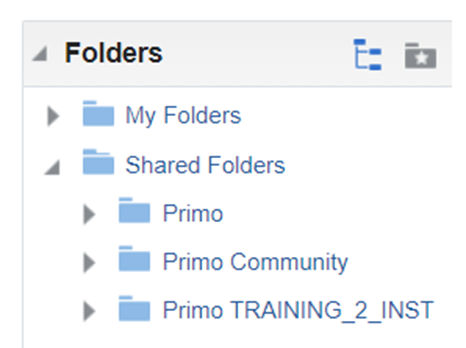
8. Is there a way to customize the entries where the links or citations are reported. Instead of saying citation 1, can we change that name to be the actual citation type?
ExL: This could potentially be done using custom formulas. Changing the default behavior for data in Analytics would need to be pursued as an enhancement request.
9. Does Ex Libris have documentation to explain the dashboards and reports that are in the Catalog? Or do we need to browse through all the reports and try to figure out their purpose?
ExL: The Using Primo VE Analytics page gives a brief overview of the objects in the Catalog, and the Subject Area documentation gives a more detailed overview of what is being reported on.
10. What is the significance of Signed In for Popular Searches?
ExL: It’s a measure of actions take by users. You may find that helpful or not relevant to your needs.
11. When looking at search strings, am I correct that when I see quote marks they were added by the user and are part of the string? Most of our no-results searches have quotes around them.
ExL: Yes, that is correct, the quotes were entered by the searcher.
12. Is there a way to see what actions were taken, for example which Resource Recommenders were clicked?
ExL: Yes, this data is available in the Primo Action Usage Subject Area.
13. Is there a data dictionary for the fields we can use in criteria? Many of them are self-explanatory but some of them absolutely are not.
ExL: The Subject Area documentation details which fields are available and describes what data appears in those fields.
14. Does Ex Libris have a recommendation about whether customers should try to add Google Analytics G4 tag to Primo? I have it on all my other web properties and would like it on Primo VE for consistency but I'm afraid it may slow down performance or mess up the JS.
ExL: I don't have a recommendation, but I do know that some institutions have done this. I'd encourage you to reach out on the Primo mailing list to hear about those libraries' experiences.

